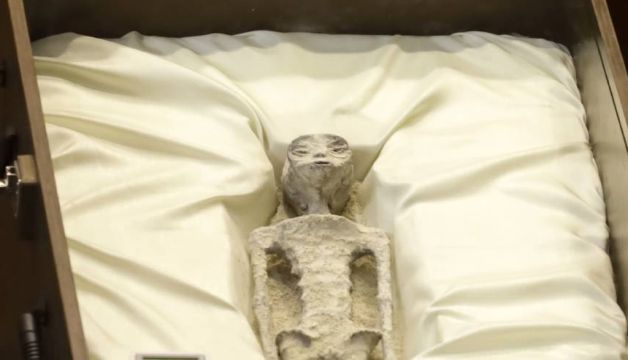Nazca Mummies Wiki: Uncovering Ancient Secrets and Modern Puzzles
The Nazca culture was an ancient civilization that existed from around 100 BC. BC flourished in the dry coastal region of southern Peru. C. to 800 AD. They are best known for their monumental geoglyphs or Nazca Lines, which are large-scale drawings of animals, plants, and geometric shapes carved into the desert floor. The Nazca also practiced a sophisticated form of mummification, preserving their dead in bundles of textiles and placing them in tombs or caves.
However, in recent years a number of controversial discoveries have challenged conventional understanding of the Nazca culture and their mummies. In 2017, a group of researchers and journalists claimed to have unearthed several mummified corpses near Nazca that did not resemble any human or animal known to science. They had elongated skulls, three-fingered hands, and three-fingered feet.
They also had a different anatomical structure and DNA composition than humans. Researchers have suggested that these mummies could be evidence of a non-human species that existed on Earth thousands of years ago and may have had extraterrestrial origins. But not everyone was convinced by these claims. Many experts and authorities have denounced the Nazca mummies as a hoax, fraud or desecration of human remains. They accused researchers of manipulating and mutilating ancient corpses to create sensational stories and profit from them.
They also highlighted the lack of scientific rigor, transparency, and ethics in the research and presentation of the mummies. The team demanded that the mummies undergo independent analysis and verification by accredited institutions and authorities.
So what is the truth behind the Nazca mummies? Are these ancient humanoids real or modern fakes? In this wiki, we will examine the evidence, arguments, and controversies surrounding this fascinating and controversial topic.
The Discovery Of The Nazca Mummies
The story of the Nazca mummies began in 2016 when a Peruvian named Mario contacted a Mexican journalist and UFO researcher named Jaime Maussan. Mario claimed to have found several strange mummified bodies in a remote cave near Nazca. He sends Maussan photos and videos of the bodies and asks him for help with the investigation.
Maussan was fascinated by Mario’s discovery and decided to travel to Peru to see the mummies with his own eyes. He was accompanied by a team of researchers including Professor Konstantin Korotkov from the National Research University of Russia, Dr. José de Jesús Zalce Benítez from the National Institute of Forensic Sciences of Mexico, and Dr. Marcos in Peru and José Mantilla. by Otromundo Communications.
The team met up with Mario and followed him to the cave where he found the mummies. There they saw several mummified corpses wrapped in white cloths. Some of them were small and about 60 centimeters long, others were larger and about 170 centimeters long. Some had elongated skulls while others had normal-shaped heads. They all had three fingers on each hand and three toes on each foot.
The team was amazed by what they saw and decided to take samples from the mummies for further analysis. They also filmed their expedition and documented their findings. Some of the mummies are named María, Wawita, Alberto, Josefina, Victoria and Alejandro.
Analysis Of The Nazca Mummies
The team sent mummy samples to several laboratories around the world for analysis. They claimed the results showed the mummies were neither human nor any known animal species. The team said that mummies had a different anatomical structure than humans, such as fewer ribs, vertebrae, phalanges, and joints.
They also said the mummies had a different chemical composition than humans, such as higher levels of cadmium, arsenic, chlorine, and uranium. They also said that mummies had different DNA than humans, such as 23 pairs of chromosomes instead of 22.
The team also conducted X-rays and CT scans on some of the mummies. They claimed that these tests revealed more details about the mummies’ internal structures and organs. The team said one of the mummies, Maria, appeared to have eggs or ovaries in her stomach.
They also said another mummy, Alberto, had metal implants made from rare elements such as osmium in his skull. The team also conducted carbon-14 dating on some of the mummies. They claimed these tests showed the mummies were between 1,000 and 1,800 years old.
The team presented their findings at various conferences and media outlets around the world. They also collaborated with Gaia.com, a subscription-based online platform focused on alternative and spiritual themes, to produce a web series titled “Unearthing Nazca” that documented their research and analysis of the mummies.
The #Nazca mummies are really fascinating Once again this puts #Peru in the spotlight as far as #UFO and #aliens are concerned #ufoX #ufotwitter pic.twitter.com/pevkCqYYIE
— Care To Solve the UnExplained (@caretosolve) September 7, 2023
The Nazca Mummies Controversy
The team’s claims about the Nazca mummies were met with skepticism, criticism, and condemnation from many experts and authorities. The team questioned the validity, reliability, and credibility of the team’s methods, results, and conclusions.
They also accused the team of violating scientific, ethical, and legal norms and standards. They also expressed concern about the possible harm and harm that the team’s actions could cause to the cultural heritage and human dignity of the Nazca people and their descendants.
Some of the main arguments and accusations against the team’s claims are:
- The mummies are fake or manipulated. Some experts suspect that the mummies were made from scratch or modified from existing human or animal remains. They pointed out inconsistencies, anomalies, and errors in the appearance, structure, and composition of the mummies. They also noted a lack of provenance, context, and documentation of the mummies. They also cited previous examples of similar hoaxes involving suspected alien or humanoid corpses.
- The mummies are people or animals. Some experts have suggested that the mummies were human or animal remains that had been deformed or altered by natural or artificial means. They highlighted the similarities, similarities, and correspondences between the mummies and known human or animal species. They also raised the possibility of genetic mutations, diseases, disorders, or defects that could explain some of the differences between mummies and humans. They also cited previous examples of similar cases involving ancient or modern human or animal remains.
- The evidence is flawed or fake. Some experts have suggested that the tests performed on the mummies were inaccurate, unreliable, or invalid. They highlighted errors, errors, or biases in the methods, procedures, or protocols used by the team. They also found a lack of verification, replication, or peer review by independent or accredited laboratories or institutions. They also cited previous examples of similar errors or fraud involving scientific testing or analysis.
- The team is biased or dishonest. Some experts have suggested that the team had hidden motives, intentions, or interests behind its claims. They pointed out conflicts, contradictions, or inconsistencies in the team’s statements, actions, or behaviors. They also noted a lack of transparency, accountability, or accountability from the team. They also cited previous examples of similar misconduct or scandals involving researchers or journalists.
The Team’s Response
The team defended its claims about the Nazca mummies and rejected the criticism and accusations made against them. They claimed that their methods, results, and conclusions were valid, reliable, and credible.
The team also insisted that they respected scientific, ethical, and legal norms and standards. They also expressed their willingness to work with other experts and authorities to advance their investigations and verify their conclusions.
Some of the team’s main arguments and answers are:
- The mummies are authentic and unchanged. The team argued that they had enough evidence to prove that the mummies were authentic and original. They said they had physical, chemical, biological, radiological, and historical evidence to support their claims. They also said they had witnesses, statements, and documents to support their claims.
- The mummies are not human or unknown. The team argued that they had enough evidence to prove that the mummies were neither humans nor known animal species. They said they had anatomical, physiological, genetic, embryonic, and evolutionary evidence to support their claims. They also said that they had comparisons, contrasts, and rankings to support their claims.
- The tests are robust and verified. The team argued that they had enough evidence to show that the tests carried out on the mummies were accurate, reliable, and valid. They stated that they had methods, procedures, and protocols in place that met scientific norms and standards. They also claimed to have been verified, replicated, and peer-reviewed by independent or reputable laboratories or institutions.
- The team argued that there were no ulterior motives, intentions, or interests behind its claims. They said they demonstrated integrity, credibility, and professionalism in their statements, actions, and behavior. They also said they demonstrated transparency, responsibility, and accountability in the examination and presentation of the mummies.

The Future Of The Nazca Mummies
The mystery of the Nazca mummies remains unsolved and controversial. The debate continues heatedly between supporters and critics of the team’s claims. The fate of the mummies themselves is uncertain and precarious. Questions about origin, identity, and meaning remain unanswered.
However, there is also the possibility of resolution and reconciliation. There is an opportunity for dialogue, collaboration, and cooperation between the different parties involved in this issue. It is hoped that a scientific, ethical, and legal consensus will be reached on how to handle, study, and protect mummies. There is potential for cultural, historical, and social appreciation of the Nazca people and their heritage.
These are some of the possible scenarios for the future of the Nazca Mummies:
- The mummies were confirmed to be ancient humanoids or unknown species. This would be a revolutionary discovery that would challenge current understandings of human history and evolution. It would also raise new questions about the origin, nature, and purpose of these beings. It would also open up new opportunities for intercultural and interspecies communication and collaboration.
- The mummies are confirmed to be deformed or altered human or animal remains. This would be a disappointing result that would expose the team’s claims as false or misleading. It would also reveal the extent of the damage his actions caused to the mummies and their descendants. It would also require the return and restoration of the mummies and their dignity.
- The mummies are confirmed to be fake or manipulated corpses, created or altered by the team or someone else. It would be a scandalous revelation that would discredit and embarrass the team and its employees. It would also highlight the extent of deception and fraud they use to try to profit from their claims. It would also require that perpetrators and their accomplices be prosecuted and punished.
- The mummies remain unconfirmed or inconclusive due to lack of evidence or agreement. This would be a frustrating situation that would prolong the uncertainty and controversy surrounding the mummies. This would also reflect the difficulty and complexity of solving this problem. It would also require an ongoing collaborative effort to find more information and consensus about the mummies.
Whatever the future of the Nazca mummies, one thing is certain: they have captured the attention and imagination of many people around the world. They have sparked curiosity, wonder, and debate among scientists, journalists, ufologists, enthusiasts, skeptics, and critics. They also highlighted the importance and challenges of scientific research, ethical behavior, cultural respect, and human rights in addressing these issues.
The Nazca mummies are more than just bodies; These are stories waiting to be told.
Summary of the main characteristics of some Nazca Mummies
| Name | Location | Age | Preservation | Anatomy | Cultural Affiliation |
|---|---|---|---|---|---|
| Maria | Unknown | Unknown | Artificial (animal bones, metal implants, synthetic materials) | Altered human (three fingers, elongated skull, unknown DNA) | None |
| Vavita | Unknown | Unknown | Artificial (animal bones, metal implants, synthetic materials) | Altered human (three fingers, elongated skull, unknown DNA) | None |
| Chauchilla mummies | Near Nazca city, Peru | Between 200 BCE and 900 CE | Natural (dry climate, resin) | Human (four fingers, normal skull, human DNA) | Nazca and other pre-Columbian cultures |
The Nazca culture was a pre-Columbian civilization that existed between 100 and 100 BC. BC flourished in the dry coastal region of southern Peru. C. and 800 AD. They are best known for their monumental geoglyphs known as the Nazca Lines, which depict various animals, plants, and geometric shapes on the desert floor. However, the Nazca left behind another remarkable legacy: their mummies.
The Chauchilla Cemetery
One of the most famous places where Nazca mummies were discovered is the Chauchilla Cemetery, located about 30 kilometers south of the city of Nazca. The cemetery contains hundreds of mummified human remains and archaeological objects from the Nazca period and beyond. This cemetery was discovered in the 1920s but was used from the 9th century AD. The cemetery contains many important burials spanning 600 to 700 years, reflecting the cultural and biological diversity of the region.
The Nazca mummies are remarkably well preserved due to the dry climate and the burial rites practiced by ancient people. The bodies were dressed in embroidered cotton and then painted with a resin that protected them from insects and bacteria. They were then placed in mud graves in a sitting position, sometimes with intentionally elongated or deformed skulls. Some mummies also show signs of tattoos, skull surgery, and disease.
The Chauchilla Cemetery was extensively looted by grave robbers, who scattered bones and pottery throughout the area. There was also vandalism and environmental damage on the site. Since 1997, the site has been protected by Peruvian law and tourists can visit it with a guide. The site is considered a valuable source of information about the Nazca culture and its relationships with other ancient civilizations.
The “Foreign” Mummies of Nazca
In recent years, another site near Nazca has attracted global attention for allegedly discovering “alien” mummies there. In 2017, a web series called Unearthing Nazca claimed to have unearthed several mummified bodies with three fingers, elongated skulls, and reptilian skin. The series was produced by Gaia.com, a subscription platform focused on alternative spirituality and pseudoscience. This series included interviews with various researchers and experts who stated that the mummies were not human, but rather belonged to an unknown species or were of extraterrestrial origin.
The series sparked controversy and criticism from many scientists, archaeologists and authorities, who denounced it as a hoax and fraud. They argued that the mummies were actually human remains that had been manipulated or mutilated to resemble aliens. They also accused the producers of violating ethical and legal standards by exploiting ancient heritage and showing no respect for the dead.
One of the series’ main critics was Dr. Rodolfo Salas-Gismondi, paleontologist and director of the Natural History Museum of Peru. He conducted an independent analysis of some mummies and concluded that they were human corpses modified with animal bones, metal implants and synthetic materials. He also identified some mummies as belonging to pre-Columbian cultures, such as the Paracas, the Wari and the Chancay.
Dr. Salas-Gismondi also noted that the series violates several laws and regulations protecting cultural heritage in Peru. He said the mummies were obtained illegally during secret excavations and smuggled out of the country without proper authorization or documentation. He also said the series had endangered other archaeological sites by encouraging looting and vandalism.
Peru’s Ministry of Culture also released a statement condemning the series and announcing an investigation into its origins and impact. The ministry said it would take legal action against those responsible for damaging or trafficking cultural property.
Final Words
The mummies of Nazca are a fascinating testimony to an ancient civilization that developed a complex culture and sophisticated knowledge of astronomy, technology, art and medicine in a hostile environment. However, they are also vulnerable to exploitation and manipulation by those who want to profit from their secret or pursue their own goals.
The case of the “Alien” Nazca mummies is an example of how pseudoscience and sensationalism can distort and disregard historical evidence and cultural heritage.
Mummified Enigmas: Comparing Chauchilla Cemetery Mummies with ‘Alien’ Mummies
| Aspect | Chauchilla Cemetery Mummies | ‘Alien’ Mummies |
|---|---|---|
| Location | Near Nazca City, Peru | Unknown |
| Discovery | 1920s | 2017 |
| Age | Between 200 BCE and 900 CE | Unknown |
| Number | Hundreds | Several |
| Preservation | Natural (dry climate, resin) | Artificial (animal bones, metal implants, synthetic materials) |
| Anatomy | Human (four fingers, normal skull, human DNA) | Altered human (three fingers, elongated skull, unknown DNA) |
| Cultural affiliation | Nazca and other pre-Columbian cultures | None |
| Legal status | Protected by Peruvian law | Illegal and smuggled |
| Scientific validity | Accepted and studied by experts | Rejected and debunked by experts |



